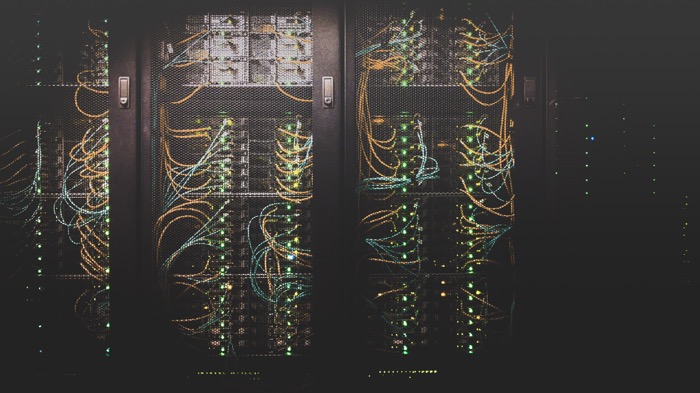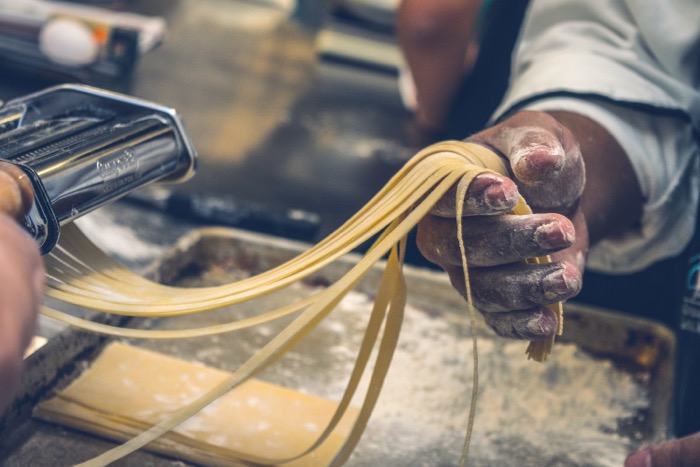
Restaurant EDI: What Is It, and Why Is It So Important for Operators to Have?
by Jillian Straw
Working in hospitality, you know that things tend to be chaotic on the job. There’s always a new customer to dazzle, a different dirty dish to clean, or a stack of outstanding invoices to be processed.
In an industry where change is the only constant, restaurant operators are in great need of tools and processes to help them streamline tasks. Enter your new best friend: EDI. In restaurant businesses, EDI can drastically reduce the amount of paper that changes hands in transactions—along with any errors that might be introduced by human processing.
Keep reading to learn everything you need to know about EDI for restaurants.
What is EDI, anyway?
EDI is the acronym for electronic data interchange. Electronic data interchange is the exchange of information across two computer systems in a fixed format. It may surprise you to learn that this isn’t new technology. Hypertext transfer protocol—you know, the “http” you’re used to seeing in your web browser—is a type of EDI!
The standardization of data types across two or more systems enables computers to easily understand, structure, and send information to each other. Consider this in the context of the “http” example: without this protocol, you would be reading this article printed in a magazine or another form of paper instead.

How does EDI work in restaurants?
EDI is widely available to restaurants of all sizes and styles. From mom-and-pop pizza shops to national name brands, every type of restaurant can benefit from having EDI as part of its operations process.
The best application of EDI in restaurants is in the Accounts Payable (AP) process. Vendors can use EDI to send invoices directly to the restaurants they serve, without having to make changes jotted in the margins of paper. The restaurants, in turn, can have digitized, searchable copies of invoices.
Software solutions like Ottimate offer EDI as a managed service for restaurants: the product intercepts EDI files from vendors, then labels, organizes, and stores the invoice file. It makes utilizing the technology extremely simple, even for the least tech-savvy operators.
Why does EDI improve the restaurant AP process?
Think back to that stack of invoices at the bar or in the back office and all of the problems it’s created for you and your team:
Paper invoices are messy.
In a busy back of house, it’s easy to stain or destroy the important information that they hold.
Paper invoices are prone to error.
Stains and rips can make paper illegible, introducing misinformation into the data. Plus, as much as we hate to admit it, humans are imperfect. It’s highly likely that, however skilled your team is, an error or two can get introduced as data is manually entered into an accounting system. But one small error every day can lead to large discrepancies at the end of a quarter.
Paper invoices are expensive to store.
To be audit-ready, your accounting team needs all invoices available—you can’t just throw out the giant stack of paper after it’s been processed. The invoices wind up precariously perched in boxes in whatever storage space your team can find.

Paper invoices are difficult to search.
Your accounting team has all the paper they need to be prepared for an audit, but finding a specific line item can take hours of searching through hundreds of individual invoices.
EDI eliminates all of these issues for restaurants, replacing paper invoice problems with streamlined and searchable data:
Information from EDI can’t be lost in a restaurant.
Invoices can’t be stained, ripped, or otherwise damaged if they’re never on paper in the first place. Retain all of the important data you need without fear of losing it.
EDI reduces errors introduced by humans in restaurants.
With EDI, data is being directly transferred from one computer system to another. There’s little to no need for human intervention, so there’s no need to worry about the data being tainted from errors. Accounting teams can breathe a sigh of relief that there’s less manual data entry for them to do with the most accurate numbers possible in their books.
Restaurant EDI makes it much less expensive to handle and store invoices.
Depending on the size and business model of your restaurant, you might need a dedicated storage space just for paper invoice storage. You also need to pay the people who have processed all of that information! In the past, we’ve estimated the cost of manually processing just one restaurant invoice to be $21.25. Try not to get a headache thinking about how much invoice processing costs you each week!
The introduction of a managed service for restaurant EDI will add a monthly recurring expense—but you’ll ultimately save money using an automated, digitized service versus paying for human data entry and physical storage.
Invoices are accessible and searchable for restaurants that use EDI.
Another benefit of a managed EDI service? Invoices are extremely easy to find and search. No more scrambling through Bankers Boxes during an audit for your accounting team: instead, they can simply make a search within their invoice platform (like Ottimate), or filter by date or vendor to pull the exact information they need.
Do all of my vendors need to use EDI for it to work for my restaurant?
And here lies the catch. As appealing as restaurant EDI is, many operators may shy away from adopting it because they assume their vendors aren’t using it. In reality, the biggest national vendors—like Sysco, US Foods, and Baldor—are all operating with EDI. But small, local, or speciality vendors might not be able to support EDI right now. You may even still receive handwritten invoices from some of them!
Don’t worry: EDI isn’t an all-or-nothing process. Ottimate’s invoice management supports scans of physical invoices as well as EDI, so all of your invoice data can still be captured and searched in one platform.
How can I help more of my restaurant vendors use EDI?
Ottimate’s vision is to provide a full end-to-end Accounts Payable solution for restaurants. But it’s tough to provide a solution that’s fully automated without every vendor up on EDI.
That’s why Ottimate is working on a solution to democratize EDI and make it available to even the smallest of vendors. Vendor processes will change as little as possible, but invoicing will become even better for restaurants.
When should I start using EDI in my restaurant?
There’s no time like the present. Request a demo with us to see how EDI can work in practice at your restaurant, and prepare to start receiving digital invoices today!
Stay up to date on the latest news in AP automation and finance
Related

